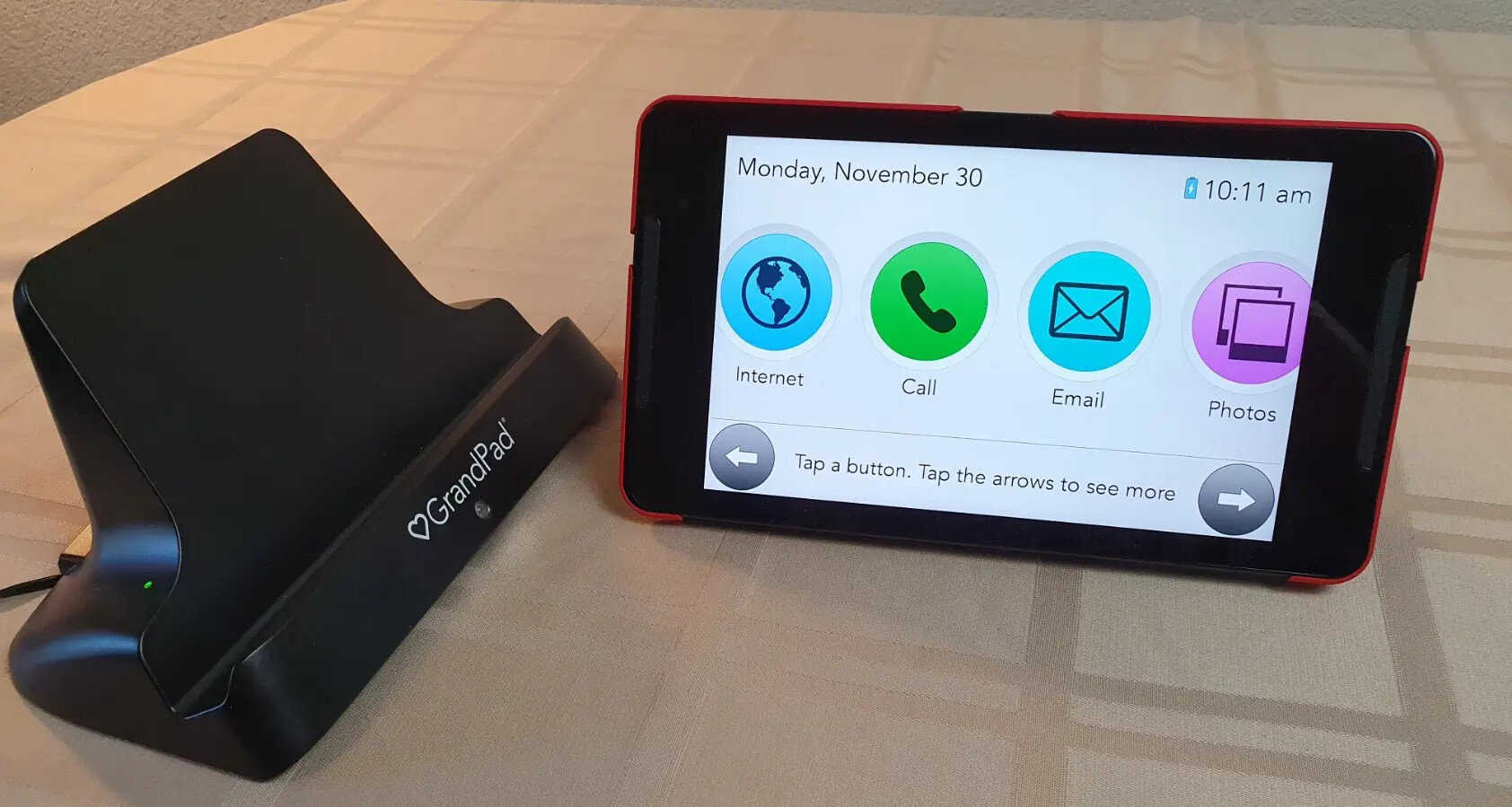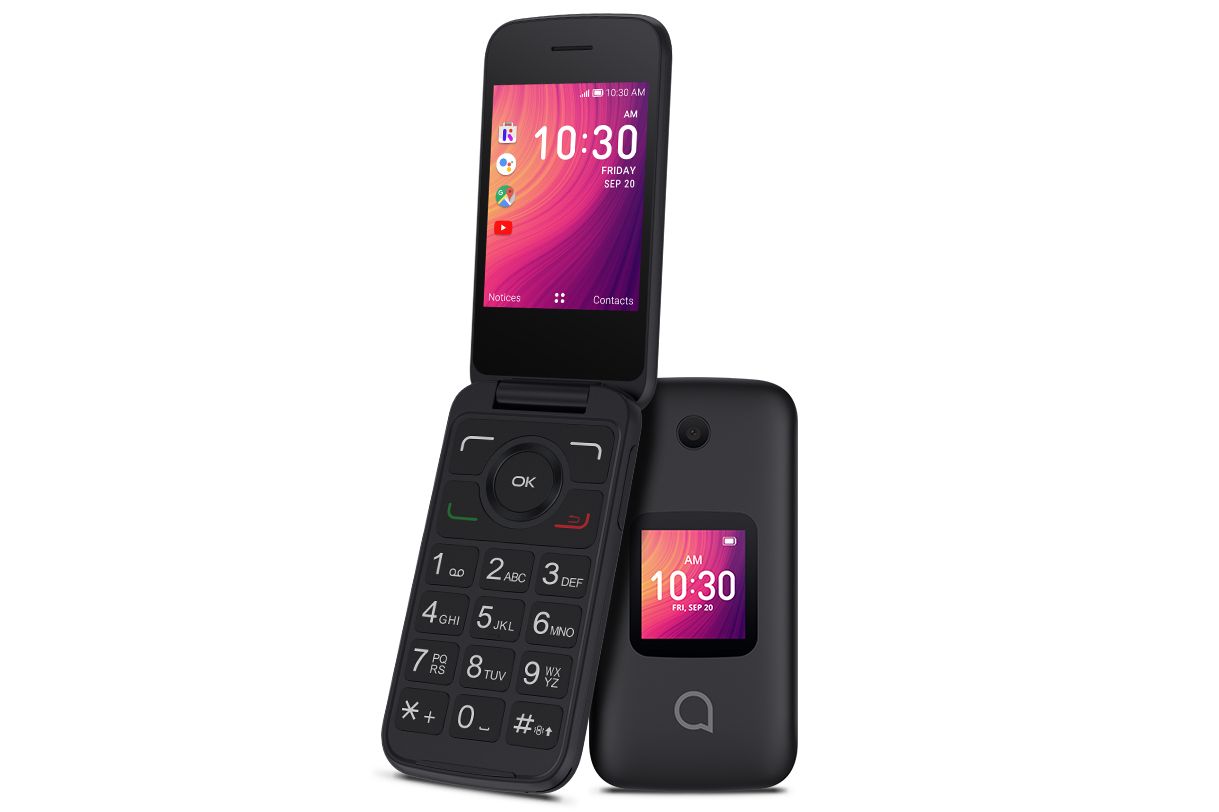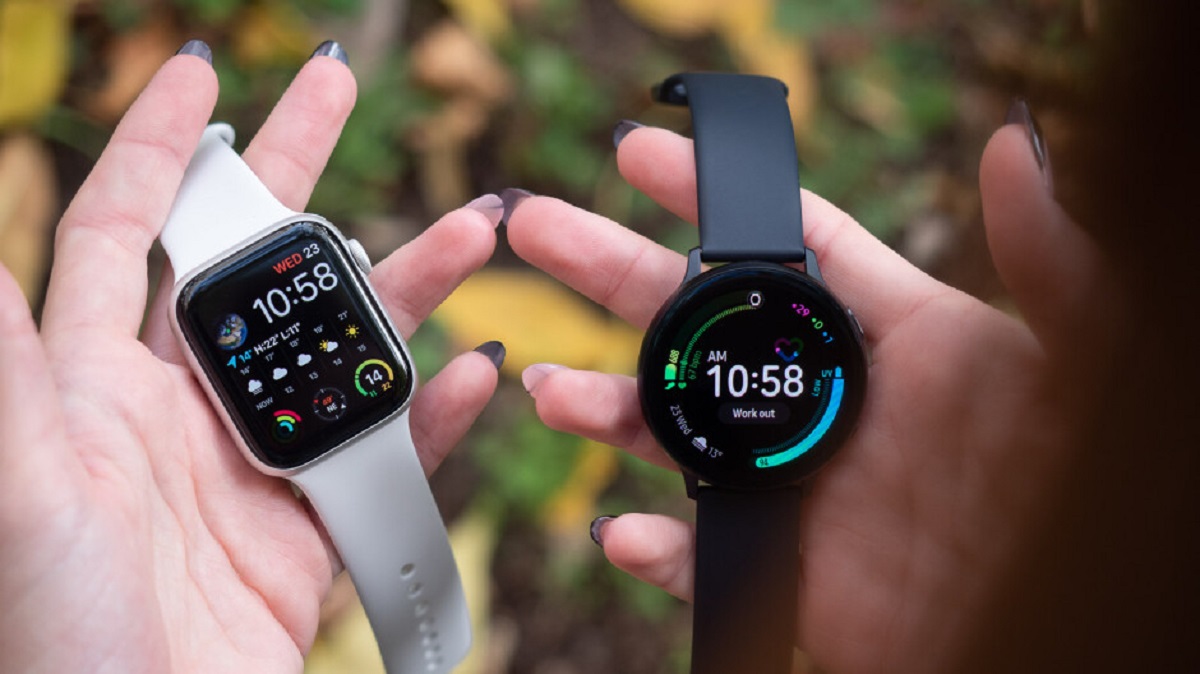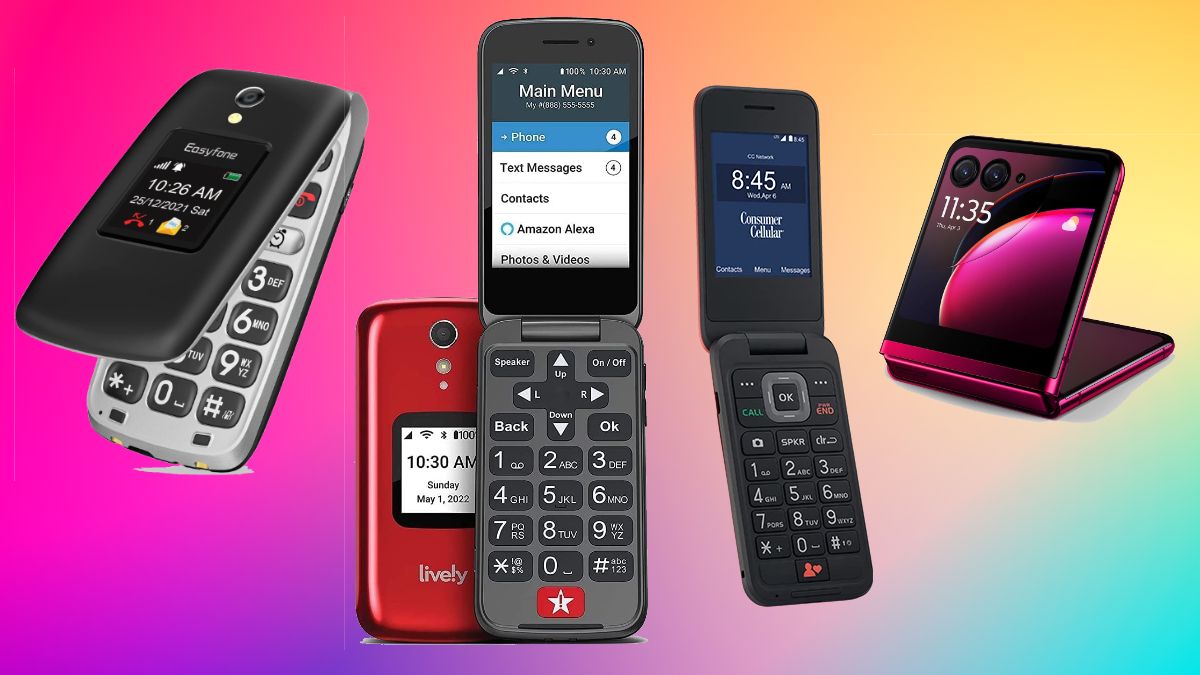The Importance of Teaching Elderly to Use a Smartphone
As technology continues to advance, smartphones have become an essential part of our daily lives. They offer us instant access to information, communication, and countless services. While younger generations often adapt quickly to these devices, it is equally important to teach the elderly how to use smartphones. This helps bridge the generation gap and enables seniors to benefit from the convenience, connectivity, and accessibility that smartphones offer.
One of the main reasons for teaching the elderly to use smartphones is to enhance their quality of life. Smartphones provide features and applications that can greatly assist older adults in their daily routines. From reminders for medication or appointments, to navigating unfamiliar places with GPS, smartphones can significantly contribute to their independence and overall well-being.
Furthermore, smartphones offer a means for elderly individuals to stay connected with their loved ones. With features such as video calls and messaging apps, seniors can easily communicate with family and friends, regardless of physical distance. This helps combat feelings of isolation and improves their social interaction, reducing the risk of loneliness and depression.
Another significant advantage of teaching the elderly to use smartphones is the access it provides to a wide range of information and resources. Seniors can browse the internet, read news articles, and access educational content to stay informed and engage in lifelong learning. They can also access various health and wellness apps, helping them track fitness goals, monitor vital signs, and manage chronic conditions.
Moreover, smartphones enable the elderly to partake in leisure activities. With access to entertainment apps, e-books, and games, seniors can enjoy themselves in their free time. This helps promote mental stimulation and relaxation, enhancing their overall mental well-being.
While the benefits of using smartphones for the elderly are ample, it is essential to recognize the challenges they may face. Older adults may find technology intimidating and struggle with the learning curve. Therefore, patient and personalized guidance is crucial in helping them overcome their fears and build confidence in using smartphones.
In summary, teaching the elderly to use smartphones is of utmost importance for their well-being and overall quality of life. By providing them with the necessary knowledge and support, we can empower seniors to take advantage of the countless benefits that smartphones offer. From improving communication and connection to enhancing independence and access to information, smartphones can greatly improve the lives of elderly individuals.
Understanding the Challenges Faced by Elderly Users
While teaching the elderly to use smartphones is important, it is crucial to recognize and understand the unique challenges they may face in the process. By addressing these challenges, we can tailor our teaching methods to ensure effective learning and support for elderly users.
One of the main challenges faced by elderly users is a lack of familiarity with modern technology. Many have not grown up with smartphones and may feel overwhelmed or intimidated by the complexity of these devices. It is important to approach teaching with patience, empathy, and a step-by-step approach to build their confidence slowly.
Another common challenge is physical limitations. As our bodies age, our vision, hearing, and motor skills may decline. Small icons, tiny text, and touch-sensitive screens can pose difficulties for seniors. It is advisable to teach them how to adjust font size, use accessibility features, and consider devices with larger screens or specialized phones designed for seniors with larger buttons and simpler interfaces.
Additionally, cognitive challenges can hinder elderly users in learning to use smartphones. Memory loss, difficulty processing information, and trouble learning and adapting to new technology can all be obstacles. Using repetition, visual aids, and offering written instructions or reminders can be helpful strategies to support their learning process.
Moreover, elderly users may face challenges related to internet safety and privacy concerns. They may be more vulnerable to online scams or have difficulty understanding security measures. Teaching them about safe browsing habits, password management, and how to identify and avoid potential threats is crucial to protect them from online risks.
Lastly, it is important to consider the emotional challenges that elderly users may experience. Frustration, fear of making mistakes, and a feeling of being left behind can all impact their confidence in using smartphones. Offering reassurance, encouragement, and creating a supportive learning environment can go a long way in helping them overcome these emotional barriers.
Overall, understanding the challenges faced by elderly users is essential in order to provide effective teaching and support. By addressing their specific needs, adapting teaching methods to accommodate physical and cognitive limitations, and fostering a safe and supportive environment, we can empower elderly individuals to overcome the challenges and embrace the benefits of smartphone usage.
Choosing the Right Smartphone for the Elderly
When teaching the elderly to use a smartphone, it is important to start by choosing the right device that suits their specific needs and abilities. Selecting a smartphone that is user-friendly, easy to navigate, and equipped with features tailored to the elderly can greatly enhance their learning experience and overall usability.
The first consideration is the operating system. Both iOS and Android offer user-friendly interfaces, but it is essential to assess the user’s familiarity with a particular system. If they have used either system in the past, it may be advantageous to stick with the same operating system to minimize the learning curve. However, if they have no prior experience, it may be beneficial to explore both systems and choose the one that is more intuitive for them.
Next, consider the physical aspects of the smartphone. Look for a device with a larger screen size as it can make it easier for elderly users to read text and icons. Additionally, phones with tactile buttons or a physical home button can provide a level of familiarity and ease of use for those who struggle with touch-sensitive screens.
Furthermore, consider the accessibility features available on the smartphone. Look for phones that offer font size adjustment, high contrast display modes, and options for larger icons. These features can assist users with visual impairments by making the content on the screen more accessible and easier to read.
It is also worth considering the battery life and durability of the smartphone. Elderly users may use their phones for extended periods throughout the day, and having a reliable battery can prevent the frustration of frequent recharging. Additionally, opting for a device with a sturdy build and good durability can help withstand accidental drops and mishandling.
Lastly, consider any specific features or applications that may benefit the elderly user. Some smartphones come preloaded with apps designed specifically for seniors, such as medication reminders, emergency call buttons, or health tracking features. Assessing the user’s needs and preferences can guide the selection of a smartphone that offers these specialized features.
In summary, choosing the right smartphone is an important step in teaching the elderly to use smartphones effectively. By considering the operating system, physical aspects, accessibility features, battery life, and specific applications, we can ensure that elderly users have a smartphone that meets their needs and enhances their overall smartphone experience.
Setting Up the Smartphone for Elderly Users
Once you have chosen the right smartphone for an elderly user, the next step is to properly set it up to ensure optimal usability and functionality. Taking the time to configure the device and tailor it to the individual’s needs can greatly enhance their learning experience and make it easier for them to navigate and use their smartphone.
The first step in setting up a smartphone for an elderly user is to assist them in creating or signing into their Google or Apple account. This is essential for accessing app stores, syncing contacts, and backing up data. Walk them through the process and ensure they understand how to recover their password or sign in on other devices if needed.
Next, customize the settings of the smartphone to suit the user’s preferences. Adjust the display settings to increase font size, enable high contrast mode or dark mode, and adjust screen timeout settings to accommodate their reading speed. Additionally, set the phone’s language to their native language to enhance comprehension and ease of use.
It is important to organize the home screen and app layout in a way that is easy to navigate for the user. Place commonly used apps on the home screen and organize them into folders based on their functions or categories. Remove unnecessary apps to avoid clutter and confusion. Keep in mind that simplicity is key for elderly users, so minimize the number of icons and avoid complex widget configurations.
Another crucial step is to configure the notification settings on the smartphone. Help the user understand how notifications work and show them how to manage and prioritize notifications from specific apps. This can prevent them from feeling overwhelmed by constant alerts and allow them to focus on important messages or updates.
Additionally, consider enabling certain accessibility features that can make using the smartphone easier for elderly users. These may include features such as magnification gestures, color inversion, or gesture-based navigation. Experiment with different settings and encourage the user to provide feedback on what works best for them.
Lastly, ensure that the smartphone is adequately protected by enabling security measures such as PIN codes, fingerprints, or facial recognition. Teach the user about the importance of locking their device and help them understand how to set up and manage these security features.
In summary, taking the time to properly set up a smartphone for elderly users is essential for their comfort and usability. By assisting with account creation, customizing settings, organizing the home screen, configuring notifications, enabling accessibility features, and implementing security measures, we can ensure that the smartphone is optimized for the specific needs of elderly users.
Basic Navigation and Familiarization with a Smartphone
Once the smartphone is set up for an elderly user, the next step is to provide them with a basic understanding of navigation and familiarization with the device. Teaching them how to navigate the interface, interact with different elements, and perform common tasks will lay a solid foundation for their smartphone usage.
Start by introducing the user to the basic physical components of the smartphone. Show them the power button, volume buttons, and any other physical buttons or ports on the device. Ensure they understand their functions and how to use them.
Next, explain the home screen and its layout. Show them how to swipe left or right to access different pages or panels on the home screen, and navigate back to the main home screen. Familiarize them with the app icons and explain that tapping on an icon will open the corresponding app.
Teach the user how to access the app drawer or the list of installed apps. On most smartphones, this is done by swiping up or down on the home screen. Show them how to find apps that are not on the home screen and how to search for specific apps using the search bar within the app drawer.
Guide the user in mastering the touch gestures on the smartphone. Demonstrate swiping gestures, such as swiping down to access the notification panel or swiping up to close an app. Show them how to pinch-to-zoom in and out when viewing photos or webpages, and how to double-tap or pinch and spread to zoom in and out on text.
Teach them how to interact with app interfaces by tapping, long-pressing, or dragging on elements. For example, explain how to tap on a button to open a menu, long-press on an item to reveal additional options, or drag a slider to adjust settings such as volume or brightness.
Introduce the user to the navigation bar, which typically appears at the bottom of the screen. Explain that the navigation bar contains essential buttons such as the home button, back button, and recent apps button. Show them how to use these buttons to navigate between apps and return to the home screen.
Finally, encourage the user to explore and experiment with the device on their own. Emphasize that making mistakes is part of the learning process and that they can always ask for assistance or refer to user manuals or online resources for further information.
In summary, providing a basic navigation and familiarization guide is crucial for elderly users to feel confident and comfortable using a smartphone. By introducing them to physical components, home screen navigation, touch gestures, app interaction, the navigation bar, and encouraging independent exploration, we can empower elderly users to navigate and interact with their smartphones with ease.
Teaching the Elderly How to Make Phone Calls and Send Text Messages
Learning how to make phone calls and send text messages is essential for elderly users to effectively communicate with others using their smartphones. By providing step-by-step guidance, patient instruction, and plenty of practice, we can help them master these fundamental communication skills.
Begin by explaining the basics of the Phone app. Show the user how to access the app from the home screen or app drawer. Familiarize them with the dial pad, contacts list, call history, and voicemail options within the app.
When teaching them how to make phone calls, demonstrate the process of dialing a number using the dial pad. Explain that they need to input the country code, area code, and the recipient’s phone number. Encourage them to practice dialing simple numbers to build their confidence.
Introduce the user to the Contacts app and teach them how to save and manage contacts. Show them how to create new contacts, edit existing contacts, and import contacts from other platforms. Emphasize the importance of adding names and numbers accurately to avoid confusion when making calls.
Guide the user in initiating phone calls from the Contacts app. Show them how to search for a contact, tap on their name, and click on the call button to start a conversation. Explain how to add contacts to favorites or speed dial for quick access.
Next, shift the focus to teaching the elderly how to send text messages. Show them how to access the Messaging app from the home screen or app drawer. Explain that they can send text messages to individuals or groups by entering their phone numbers or selecting recipients from their contacts.
Walk them through the process of composing and sending a text message. Show them how to input text using the on-screen keyboard, including uppercase and lowercase letters, punctuation, and special characters. Teach them how to send the message using the send button or enter key.
Explain how to view incoming text messages and how to respond to them. Demonstrate the process of opening a received message, reading its content, and composing a reply. Show them how to attach images or emoticons, if applicable, to their messages.
Don’t forget to emphasize the importance of proper text etiquette and clarity when communicating through text messages. Teach them to proofread their messages before sending, use appropriate language, and avoid typing in all caps.
In summary, teaching the elderly how to make phone calls and send text messages is an essential part of their smartphone learning process. By explaining the phone and messaging apps, demonstrating dialing and messaging procedures, and offering plenty of practice, we can help elderly users confidently engage in conversations and stay connected with others using their smartphones.
Helping Elderly Users Connect to Wi-Fi and Use Mobile Data
Connecting to Wi-Fi networks and utilizing mobile data are important skills for elderly users to have when using smartphones. By providing clear instructions and simplifying the process, we can assist them in easily connecting to the internet and managing their data usage.
Start by explaining the concept of Wi-Fi and its benefits. Inform them that Wi-Fi allows them to connect to the internet without using their mobile data, which can save them from incurring additional charges. Show them how to access the Wi-Fi settings on their smartphone and search for nearby networks.
Teach them how to connect to a Wi-Fi network by selecting the desired network from the available options. If the network is password-protected, show them the process of entering the password provided by the network owner. Emphasize the importance of entering the password correctly to establish a successful connection.
Furthermore, guide them in saving Wi-Fi network credentials to prevent the need for re-entering passwords every time they want to connect. Explain how to enable the “Auto-Join” feature for frequently used networks to automatically connect whenever available. This reduces the hassle and makes the process more convenient for them.
Next, explain the concept of mobile data and its purpose. Help them understand that mobile data allows them to access the internet when Wi-Fi is not available. Show them how to access the mobile data settings on their smartphone and toggle the switch to enable or disable it.
Teach them how to monitor their mobile data usage to avoid exceeding their monthly allocation. Show them where to access the data usage statistics on their smartphone and explain how to set data usage limits or enable data warning notifications. This allows them to stay informed and manage their data usage effectively.
If applicable, show them how to adjust their data preferences, such as enabling or disabling background app refresh, limiting apps from using cellular data, or setting up Wi-Fi Assist to automatically switch to mobile data when Wi-Fi connectivity is weak.
It is essential to teach them about the importance of securing their internet connections. Show them how to identify secure Wi-Fi networks that require passwords or have the lock symbol next to their names. Warn them about the risks of connecting to unsecured networks and advise them to avoid sensitive transactions or sharing personal information when connected to public Wi-Fi.
In summary, helping elderly users connect to Wi-Fi networks and use mobile data is crucial for their internet access and overall smartphone experience. By explaining the Wi-Fi and mobile data concepts, teaching them how to connect to networks, manage their data usage, and prioritize security, they can feel confident and empowered to access the internet whenever they need to.
Explaining How to Download and Use Apps Specifically for Their Needs
Downloading and using apps tailored to their specific needs can greatly enhance the smartphone experience for elderly users. By explaining the process of downloading, installing, and using apps, we can help them access a wide range of applications designed to cater to their individual requirements.
Start by introducing the elderly user to the app store on their smartphone. Explain that the app store is a platform where they can discover and download various applications. Show them how to access the app store from their home screen or app drawer.
Show them how to search for apps by typing in keywords related to their specific needs, such as “medication reminder,” “brain games,” or “senior fitness.” Encourage them to explore different categories and read app descriptions and reviews to determine the suitability of the apps.
Once they have chosen an app, guide them through the installation process. Explain that they need to click on the app icon or the “Install” button to start downloading the app. Depending on their device and app store, they may be required to enter their password or use fingerprint or face recognition to authenticate the installation.
After the app is successfully downloaded, assist them in opening the app and familiarizing themselves with its features and functions. Many apps have onboarding tutorials or introductory screens that guide users through their first-time setup. Encourage them to follow the instructions and make any necessary customization to personalize the app experience.
Teach them how to navigate within the app, including swiping or tapping on different screens, accessing various menus or tabs, and interacting with the different buttons or options. Explain that they can usually find additional information or help within the app through features like FAQs, tutorials, or contacting support.
Emphasize the importance of keeping their apps updated. Show them how to access the app store, navigate to the “Updates” section, and update their installed apps. Explain that regular updates bring bug fixes, new features, and improved security to ensure a smooth app experience.
Instruct them on how to organize and manage their apps on the home screen. Demonstrate dragging and dropping app icons to rearrange them or placing them into folders for better organization. This makes it easier for them to locate and access the apps they use most frequently.
Lastly, remind them to be mindful of app permissions and privacy settings. Educate them about the types of data that apps may require access to and how to review and modify those permissions within the settings of their smartphone. Encourage them to be cautious when granting permissions and prioritize their privacy and security.
In summary, explaining how to download and use apps specifically tailored to their needs empowers elderly users to access and utilize applications that enhance their smartphone experience. By guiding them through the process of app discovery, installation, navigating the app interface, updating apps, organizing their home screen, and prioritizing privacy, they can fully benefit from the vast array of apps available to them.
Teaching Elderly Users How to Take and Share Photos
Teaching elderly users how to take and share photos with their smartphones can open up a whole new world of capturing and sharing special moments. By providing step-by-step guidance and encouraging creativity, we can help them master the art of smartphone photography and effortlessly share their cherished memories.
Start by explaining the basics of the smartphone’s camera app. Show them how to access the camera app from the home screen or app drawer. Familiarize them with the different camera modes, such as photo, video, panorama, or portrait, and help them understand the icons and options available in the camera interface.
Introduce them to the basics of framing a photo. Teach them about the rule of thirds and how to align the subject of interest with the grid lines on the screen. Encourage them to experiment with different angles and perspectives to capture unique and visually appealing photos.
Show them how to focus on a subject by tapping on the screen. Explain that tapping on a specific area will adjust the focus and exposure for that area, resulting in a clearer and brighter photo. Teaching them this technique can greatly enhance the quality of their photos.
Next, guide them in using camera features such as flash, timer, and HDR (High Dynamic Range). Explain when and how to use these features to achieve better results in different lighting conditions or when capturing group photos.
Teach them how to review and delete photos they have taken. Show them how to access the photo gallery and navigate through their saved photos. Explain the process of selecting and deleting unwanted photos to free up storage space on their device.
Show them how to share their photos with others. Demonstrate different methods of sharing, such as through messaging apps, email, or social media platforms. Walk them through the process of selecting the desired photos, choosing the sharing method, and following the prompts to complete the sharing process.
Explain the importance of privacy and caution when sharing photos. Encourage them to be mindful of what they share and with whom they share it. Teach them how to adjust the privacy settings on their social media accounts or how to use direct messaging for more private photo sharing.
Finally, fuel their creativity by suggesting fun photography projects or themes. Encourage them to capture the beauty of nature, interesting objects, or cherished memories through their camera lens. This can inspire them to continue exploring and honing their photography skills.
In summary, teaching elderly users how to take and share photos with their smartphones allows them to capture and preserve precious memories. By guiding them through using the camera app, framing photos, adjusting settings, reviewing and deleting photos, sharing with others, and fostering their creativity, they can unlock the joy and satisfaction of smartphone photography.
Introducing Safety and Security Measures on a Smartphone
Introducing safety and security measures on a smartphone is of utmost importance for elderly users to protect their personal information and ensure a safe digital experience. By educating them about potential risks and providing guidance on implementing safety measures, we can empower them to navigate their smartphones with confidence and peace of mind.
Start by raising awareness about the importance of strong passwords and passcodes. Teach them how to create a secure password using a combination of uppercase and lowercase letters, numbers, and special characters. Emphasize the need for unique and memorable passwords for their device and online accounts.
Explain the significance of keeping their device locked when not in use. Show them how to set up a lock screen pattern, PIN code, fingerprint, or facial recognition to prevent unauthorized access to their smartphone. Encourage them to always lock their device, especially when it’s out of their sight.
Introduce them to the concept of phishing scams and social engineering. Explain that scammers may try to trick them into revealing personal information through fake emails, messages, or websites. Teach them how to recognize suspicious links or requests and to be cautious when sharing sensitive information online.
Show them how to enable two-factor authentication (2FA) for their online accounts. Explain that 2FA adds an extra layer of security by requiring a verification code or a biometric authentication in addition to their password. Guide them through the process of setting up 2FA for their email, social media, and other accounts they may use on their smartphone.
Teach them about the importance of keeping their smartphone’s operating system and apps up to date. Explain that regular updates often contain security patches that protect against known vulnerabilities. Show them how to check for updates in their device’s settings and enable automatic updates whenever possible.
Ensure they understand the significance of downloading apps only from trusted sources, such as the official app store. Warn them about the potential risks of downloading apps from unknown or third-party sources, which may contain malware or compromise their security. Remind them to read reviews and check the developer’s credibility before installing an app.
Introduce them to privacy settings on their smartphone and various apps. Show them how to navigate their device’s privacy settings to control permissions and restrict access to sensitive data, such as location, contacts, or photos. Encourage them to regularly review and adjust these settings as needed.
Explain the importance of using secure Wi-Fi networks for internet access. Caution them against connecting to public or unsecured Wi-Fi networks, which can be vulnerable to hackers. Remind them to connect to trusted networks with passwords and to use a virtual private network (VPN) for added security when accessing sensitive information.
In summary, introducing safety and security measures on a smartphone is vital for elderly users to safeguard their personal information and protect themselves from potential risks. By educating them about password security, device locking, phishing scams, two-factor authentication, updating software, downloading apps safely, privacy settings, and secure Wi-Fi usage, we empower elderly users to navigate their smartphones responsibly and securely.
Solving Common Problems Faced by Elderly Smartphone Users
Like any technology, smartphones can sometimes pose challenges for elderly users. By addressing common problems and offering practical solutions, we can help elderly smartphone users overcome difficulties and enjoy a smoother smartphone experience.
One common problem faced by elderly users is difficulty reading small text or icons on the screen. To alleviate this issue, show them how to adjust the font size in the accessibility settings of their smartphone. Additionally, recommend using the zoom or magnification feature to enlarge specific areas of the screen.
Another problem is accidental taps or misplacing buttons due to reduced dexterity. Encourage elderly users to take advantage of touch sensitivity settings that can adjust the responsiveness of their smartphone’s screen. Additionally, suggest using a stylus or a smartphone case with built-in grip to enhance control and accuracy.
For those struggling with remembering passwords or passcodes, recommend using a password manager app. These apps securely store passwords and provide convenient access, eliminating the need to remember multiple complex passwords.
If elderly users are experiencing slow performance or lagging apps, suggest clearing the cache or closing unused apps. Show them how to use the task manager or recent apps button to close apps running in the background. Additionally, guide them on how to optimize their smartphone’s performance by disabling unnecessary system animations or reducing the number of active widgets.
Battery life is often a concern for elderly users. Offer tips to conserve battery, such as reducing screen brightness, disabling unnecessary notifications, and closing power-hungry apps. Advise them to refrain from leaving their smartphone in extreme temperatures and to charge it regularly to maintain optimal battery health.
If elderly users are struggling with accidental touches or navigating complex interfaces, recommend using simplified launcher apps or user-friendly customizable interfaces. These can provide a more streamlined and straightforward user experience by simplifying the layout and reducing clutter.
Sometimes, issues with connectivity arise. If elderly users have trouble connecting to Wi-Fi networks, walk them through the process of forgetting and reconnecting to the network. If mobile data is not functioning properly, suggest checking the data plan or restarting the device.
When encountering app-related issues, guide elderly users on how to clear the app cache or reinstall problematic apps. Encourage them to check for app updates and ensure that the app is compatible with their device’s operating system version.
For elderly users struggling with using certain features or unfamiliar with certain functions, offer personalized tutorials or recommended video tutorials available online. Provide access to user manuals or help guides specific to their smartphone model.
Lastly, emphasize the importance of patience and reassurance when facing problems. Encourage elderly users to seek assistance when needed and remind them that learning technology takes time and practice.
By addressing common problems and providing practical solutions, we can help elderly smartphone users navigate their devices with greater ease and confidence.
Patience and Encouragement: Strategies for Effective Teaching
When teaching elderly individuals how to use smartphones, it is important to approach the process with patience, empathy, and encouragement. By utilizing strategies that promote a supportive learning environment, we can effectively guide elderly users through the challenges of learning new technology.
First and foremost, be patient. Understand that elderly learners may require more time to comprehend and retain information. Allow them to learn at their own pace and avoid rushing or becoming frustrated. Patience is key in creating a positive and stress-free learning experience.
Simplify complex concepts and break down instructions into manageable steps. Present information in a clear and structured manner, using simple language and avoiding jargon or technical terms. Provide visual aids, such as diagrams or screenshots, to enhance understanding and reinforce key concepts.
Repetition is an important learning tool. Repeat instructions and important concepts multiple times to reinforce understanding. Be prepared to answer the same questions or provide clarification as needed. Repetition helps solidify information in the minds of elderly learners.
Encourage active participation and hands-on learning. Allow elderly users to practice and experiment with their smartphones under your guidance. Encourage them to ask questions and provide feedback. Actively involve them in the learning process to foster engagement and confidence.
Offer positive feedback and praise their progress. Recognize and acknowledge their efforts, no matter how small. A supportive and encouraging environment boosts morale and motivation, making the learning experience more enjoyable and rewarding.
Be empathetic and understanding. Remember that technology can be intimidating for elderly users. Validate their concerns, fears, or frustrations, and reassure them that it is normal to feel overwhelmed at times. Provide emotional support and reassurance throughout the learning process.
Adapt teaching methods to suit individual learning styles and preferences. Some elderly learners may learn better through visual aids, while others may prefer verbal explanations. Observe their responses and adjust your teaching approach accordingly to cater to their specific needs.
Break tasks into smaller, achievable goals. Celebrate every milestone and progress made by elderly learners. By focusing on small achievements, you can boost their confidence and motivation, ultimately leading to a more positive and effective learning experience.
Lastly, maintain open lines of communication. Encourage elderly users to share their concerns, questions, or difficulties they encounter. Listen actively and provide support and guidance accordingly. Regularly check in with them to ensure they feel supported and to address any challenges that may arise.
In summary, employing patience, encouragement, and effective teaching strategies is vital when teaching elderly individuals how to use smartphones. By creating a positive and supportive learning environment, we can empower them to embrace technology with confidence and enjoy the benefits it offers.
Additional Resources for Further Help and Support
Learning to use smartphones can be an ongoing process for elderly users, and it’s important to provide them with additional resources for further help and support. These resources can assist them in deepening their knowledge, troubleshooting issues, and connecting with communities that understand their specific needs and challenges.
Online tutorials and guides specifically tailored for elderly users can be valuable resources. These tutorials offer step-by-step instructions, visual demonstrations, and helpful tips for using smartphones. Websites, YouTube channels, and online forums dedicated to teaching technology to seniors provide an abundance of useful resources.
Smartphone manufacturers often provide comprehensive online support and knowledge bases. These resources include user manuals, FAQs, troubleshooting guides, and forums where users can ask questions and receive support from experts or fellow users.
Local community centers or senior centers may offer technology classes or workshops designed for seniors. These programs provide hands-on training, group discussions, and opportunities for peer support. Connecting with fellow learners in person can be beneficial for building confidence and sharing experiences.
Smartphone training apps and programs designed specifically for elderly users may also be available. These apps offer interactive tutorials, guided practice activities, and personalized learning paths. Some apps even provide ongoing support and help monitor progress.
Telecom providers and mobile phone retailers often offer customer support services for their elderly customers. They may have dedicated helplines or support centers specifically for seniors. These services can help address technical issues, provide personalized assistance, and offer recommendations for apps or settings that cater to the needs of elderly users.
Online communities and social media groups focused on seniors and technology can be valuable platforms for exchanging information, seeking advice, and sharing experiences. Joining these communities allows elderly users to connect with like-minded individuals facing similar challenges and learn from their collective knowledge and experiences.
Books and publications on smartphone usage for seniors can provide comprehensive information, tips, and step-by-step instructions. These resources may cover various topics, including basic smartphone operations, specific app tutorials, privacy and security measures, and troubleshooting common problems.
Lastly, encourage elderly users to seek assistance from friends, family members, or caregivers who are knowledgeable about smartphones. These individuals can provide one-on-one support and guidance, helping them troubleshoot issues, explore new features, and stay up to date with the latest smartphone trends and updates.
In summary, additional resources for further help and support can greatly enhance the smartphone learning experience for elderly users. By connecting them with online tutorials, manufacturer support, local community programs, training apps, customer support services, online communities, publications, and personal assistance, we can ensure that they have access to the ongoing guidance and support needed to become proficient smartphone users.

























